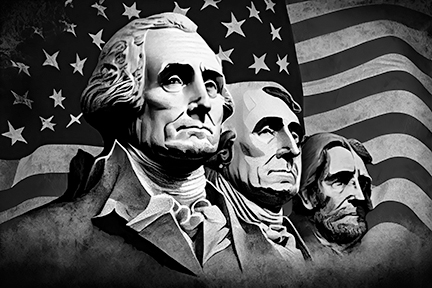
Each year, the third Monday of February marks Presidents’ Day, a federal holiday dedicated to honoring the leaders who have shaped the United States.
While many believe this day was established solely to celebrate George Washington, whose birthday falls on February 22, it has since evolved into a day that commemorated all past, present, and future U.S. presidents and their contributions to the nation. During Washington’s lifetime, and even after his passing, Americans informally celebrated his birthday as a tribute to his leadership. In the early 1800s, lawmakers sought to formalize the occasion, leading to February 22 becoming a federal holiday.
This legislation was signed into law by President Rutherford B Hayes, though at the time, it only applied to federal workers in Washington, D.C. Due to growing demand, in 1885, the holiday was extended to include all federal employees across the country.
In 1971, as part of the Uniform Monday Holiday Act, the holiday was moved from Washington’s actual birth date to the third Monday of February. This legislation aimed to create more three-day weekends for American workers and to standardize federal holidays. While the law was signed by President Lyndon B. Johnson in 1968, it officially took effect under President Richard Nixon in 1971.
Although the holiday is still officially recognized as Washington’s Birthday, over time, it became widely known as Presidents’ Day.
This shift was due in part to the proximity of Abraham Lincoln’s birthday on February 12 and the recognition of his contributions, particularly in abolishing slavery. Over the years, the holiday has evolved into a day to honor all U.S. presidents, celebrating their leadership and impact on the country.
Interestingly, despite its origins in celebrating Washington, the holiday never actually falls on his birthday. Instead, it always occurs between February 15 and February 21. Some states, such as Minnesota, continue to recognize it under different names, including “Washington and Lincoln Day” or simply “Washington’s Birthday.”
Presidents’ Day serves as a time to reflect on presidential leadership and civic responsibility, both essential to the nation’s past and future. While the holiday is widely recognized for major retail sales, it also includes historical and educational observances. Government offices, banks, and many schools close in observance of the holiday. Schools and museums host events highlighting the history and influence of U.S. presidents.
Many Americans use the day to engage in activities that promote civic awareness, such as visiting historical sites, reading presidential biographies, or watching documentaries.
Although the holiday may come and go, the values it represents endure. Americans can celebrate year-round by learning about past presidents, reflecting on qualities of strong leadership, and engaging in community service. Whether through volunteering, studying history, or simply appreciating the sacrifices made by past leaders, the true essence of Presidents’ Day lies in keeping patriotism alive and active.
